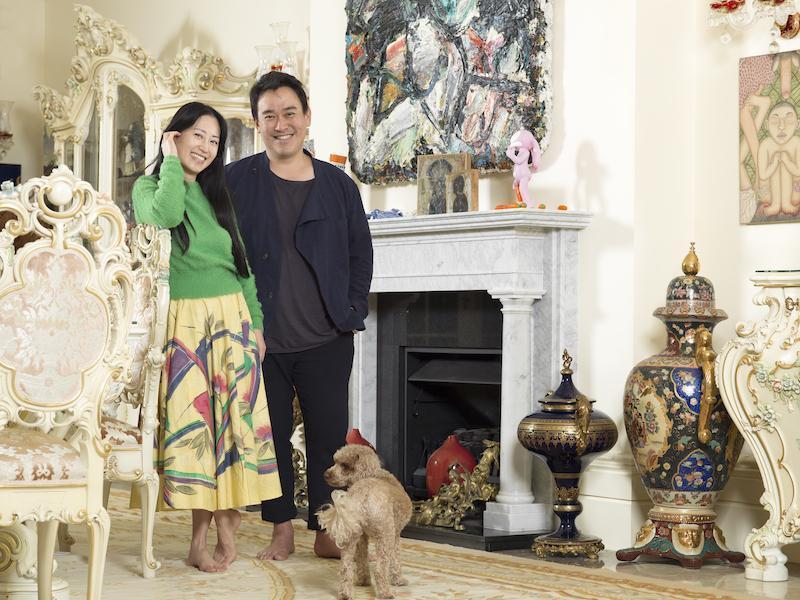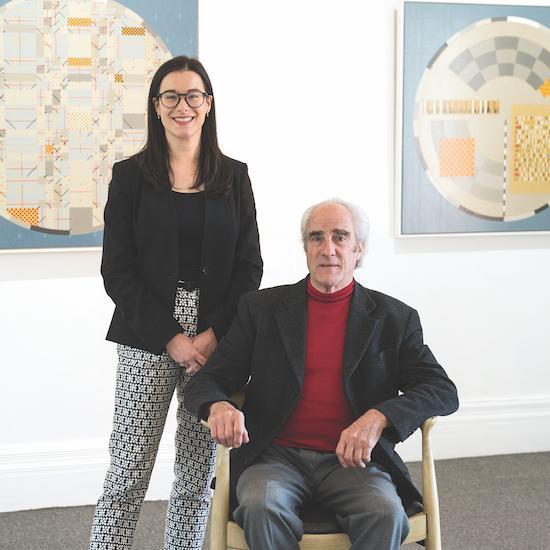A Collector’s Crusade
Konfir Kabo’s 1,500-piece art collection is the fruit of a crusade to bring contemporary Indonesian art to an Australian audience.
Words: Duro Jovicic
Photography: Elke Meitzel
Konfir Kabo jokes that I was his first “white friend” after migrating to Australia in 1988 – the year we were acquainted. He went on to complete a degree in law and in time opened his own practice, Kabo Lawyers, in 2001. It’s not unusual to see his name in print through his ventures in commercial property acquisitions and sales, though he prefers any publicity to be for his endeavours in promoting Indonesian art and artists. His personal collection consists of a staggering 1,500 artworks, including large installations more suited to a museum than a home.
What moves him to collect art is that it’s a combination of, as he says, “passion and stupidity”. He corrects himself. “Maybe not stupidity…though needing to own the work… like a magpie collects sparkly things.” For Kabo it’s simple – he’s not here to “buy wallpaper” – the artwork must speak to him and quickly, or he moves on.
Through tireless efforts on his behalf, these sparkly things have seen Kabo become a conduit between Indonesian artists, budding collectors, and the public – bringing cultural awareness closer to the surface. In 2016, he and his wife Monica Lim established Project Eleven to support contemporary Indonesian art projects with a particular focus on new commissions and cross-cultural projects. They have sponsored Australian residencies and exhibitions by artists such as Ugo Untoro and Jumaldi Alfi (cofounder and member of Jendela Art Group—a prominent Indonesian art collective). Kabo sees such initiatives as “soft diplomacy” through art.
We meet in a sterile beige office within his law practice and Kabo, brash and quick in his movements, shows me works from an artist he has just purchased. “You know me, I like penises and vaginas,” he says. The artist in question is Vania Gunarti and before I can blink, my phone beeps as he sends through a trove of images by her. The drawings of exaggerated limbs, bare torsos, and phallic objects serve to subvert the historical notion of the female nude being constructed predominantly for the male gaze.
You never know what Kabo will show you. Recent correspondence included noteworthy Indonesian work of artists like Muklay who has harnessed popular appeal and is tapping into multi-disciplinary practice by having his work digitally emblazon the walls of the Coach store in Jakarta. Or the Bandung-based artist Anastasia Astika, whose monoprints of seemingly abandoned buildings and outposts suggest a maturity beyond her 27 years.
Through Project Eleven, Kabo hosts annual trips for people to directly experience the burgeoning art scene in Indonesia. I can vouch firsthand that these trips are as wondrous as they are discombobulating. The pace is fast, speeding through dirt roads and cutting through swathes of tropical forest. Around 20 Australians, ranging from heads of cultural institutions to friends and colleagues, saddled together in air-conditioned black SUVs traversing the artistic hotspots of Jakarta, Bandung and Jogjakarta. We enter the studios of artists and see anything from delicately blown borosilicate glass penises, that Kabo considers for commission to set into a sprawling chandelier, to works on canvas and intricate wood structures the size of a modest apartment.
These trips have a levelling effect. There’s no time for pretense. We meet, greet, have coffee, eat local delicacies, laugh, engage, deliberate – then, with judicious speed, are whisked away by Kabo to the next destination, where he’s unfailingly greeted with warmth and reverence. By extension so are we.
Kabo sees the Indonesian Government as promoting a prevailing view of a tropical paradise often coupled with the provincial art of Bali. He also points out that if you were to go to a travel agent in Melbourne, there would be posters of Italy, France, and the USA, yet for Indonesia it’s just about Bali; the active promotion of the tourist dollar subsumes a genuine and diverse understanding of what Indonesia has to offer.
This is just one of the challenges in bringing Indonesian art to the fore in Australia; despite ostensible goodwill and proclamations of the “importance of the relationship” it is still viewed as Other. Kabo is disappointed at the slow uptake of Indonesian art by our major collecting institutions, especially given its vibrancy and depth. This lack of enduring interest has seen contemporary Indonesian work of peripheral interest at the board level of most of our major institutions. The Queensland Art Gallery/Gallery of Modern Art (QAGOMA), is an exception to this, advancing Indonesian art though the Asia Pacific Triennial exhibitions since 1993. The QAGOMA collection of Indonesian art is now sizeable and features art by some of Indonesia’s most important artists.
In promoting an understanding of these and other Indonesian artists Kabo connects us at a human level to the experiences and lives of others through their practice and shows we all have complex and unique takes on it outside of accepted prejudices – them: Bintang singlets, batik fabric and a rose-coloured utopian paradise; us: koalas, kangaroos and the ubiquitous “throw a shrimp on the barbie”. Much like Indonesia itself – consisting of more than 17,000 islands and more than 700 indigenous local languages and a thriving art practice – diversity is reflected in Kabo’s expansive collection.
Kabo feels that, despite humanity’s differences, art allows a space for dialogue on ideas, and enriches understanding between us. A utopian view for sure, though he sees people viewing art as a form of parity – seeing the art for what it is, not just the person behind it.
“Art has no race,” he states emphatically. “Art has no religion. Art has no sex. Art is just art.”
The death of commercial Australian galleries representing Indonesian artists has begun to thaw in recent years. 16albermarle Project Space, based in Newtown, Sydney and founded by John Cruthers, provides Australian audiences with the opportunity to experience contemporary art from southeast Asia, with the focus on Indonesian art. Cruthers shows numerous Indonesian artists such as Citra Sasmita, Dias Prabu, Prihatmoko Moki and Sekarputri Sidhiawati, all of which are represented in Kabo’s collection.
Kabo sponsored Prabu for a one-month residency at the Australian Tapestry Workshop, which coincided with his solo exhibition at 16albermarle Project Space, in 2020. He also commissioned a work from Prabu measuring 100 metres long; taking three months to complete. Prabu’s work is unique in that he uses traditional Batik techniques, yet his execution is thoroughly innovative, using historical events and mythology as a vehicle to approach issues in a satirical and darkly humorous way.
Darren Knight Gallery, in conjunction with Cruthers and IndoArt Link, held the show Termasuk: Contemporary Art from Indonesia in 2019. Darren Knight has since included the artist Agung ‘Agugn’ Prabowo from this show in his permanent stable of artists. Another heartening development is the establishment of Redbase Art Gallery by Nancy Nan, which is Sydney based, in 2021. Its focus is on exhibiting international contemporary art, in particular Indonesian art. These dedicated spaces will help show the Australian public the sheer wealth of talent our neighbours can bring to the cultural plate.
I prod Kabo on the endgame of his seemingly amorphous collection of works, and mention how others, such as Michael Buxton, bestowed his collection to the University of Melbourne, with a permanent exhibiting space named Buxton Contemporary. He tells me his hope is to donate the collection to an institution to be held in perpetuity to further the appreciation of Indonesian art in Australia. The form of which this would take is still very much a mystery, even to him.
As we leave the office, he tells me of a fellow arts patron who discussed his worst nightmare – being in the company of people who bore him, with no way out. In his retelling Kabo pauses and laughs: “There is no greater nightmare than being caught in the presence of bad art!”
This article was originally published in Art Collector issue 101, July to September 2022.
Image: Konfir Kabo and Monica Lim in their home. Su Dongping’s No. 15, 2014 hangs behind with smaller paintings Mr Black, 2002 and Mr Black, 2001 by Yunizar and Arkiv Vilmanza’s Rabbiv in Wounderland, 2021 on the mantel. Courtesy: Konfir Kabo and Monica Lim.









